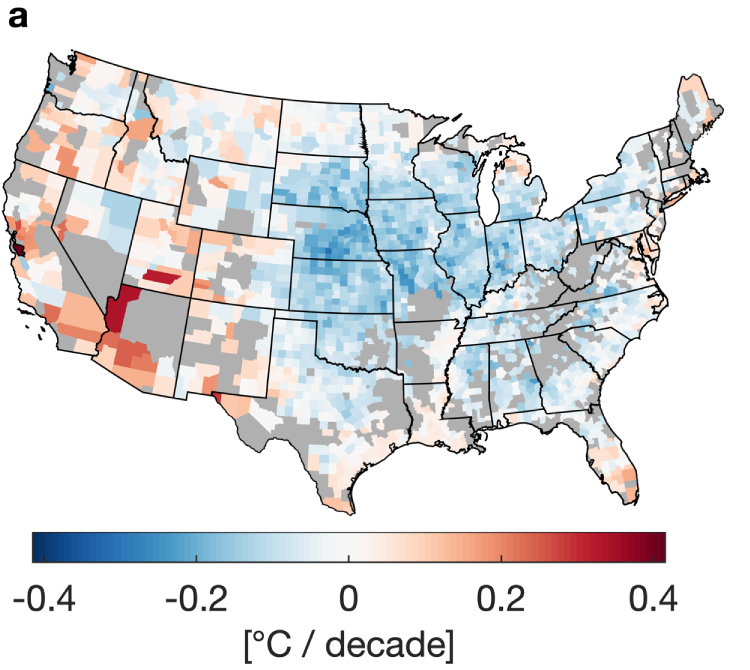US corn yields get boost from a global warming 'hole'
October 23, 2019 - ScienceDaily

The global average temperature has increased 1.4 degrees Fahrenheit over the last 100 years. In contrast, the Corn Belt of the U.S., one of the most agriculturally productive regions of the world, has experienced a decrease in temperatures in the summer during the growing season. Known as the "U.S. warming hole," this anomalous cooling phenomenon, which occurred in tandem with increasing rainfall, was responsible for boosting corn yields by 5 to 10 percent per year, according to a Dartmouth-led study published in Environmental Research Letters. The study is one of the first to investigate the impacts of the warming hole on agriculture.
Most of the increases in corn yield over the 20th century have resulted from advancements in crop genetics, increased fertilizer application and improved agricultural practices. "If however, the U.S. warming hole had not existed, corn yields for the average county in the central U.S. would have been approximately 10 percent lower per year," explained lead author Trevor F. Partridge, a graduate student in the department of earth sciences at Dartmouth. "This benefit of a 10 percent higher corn yield translates to roughly $1.5 billion per year in additional value. Our results underscore how the central U.S. has been relatively sheltered from the impacts of climate change," he added. ($1.5 billion calculation uses historical market value data from Iowa State University Extension and Outreach and U.S. corn production data from the U.S. Department of Agriculture).
See full article.
See the original letter.

